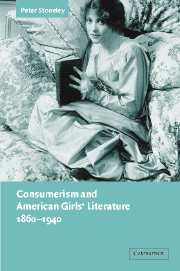2 - Magazines and money
Published online by Cambridge University Press: 22 September 2009
Summary
Although most studies of children's fiction tend to focus almost exclusively on novels, a significant part of the market for both authors and readers was that of children's magazines. Many novels were serialized in the magazines, and often the short magazine story does what the novel does. But there are also some differences, and these can be related to the specific nature and position of the magazines. There are three closely interconnected issues here: the evolving publishing context of the magazines; the effect this context had on authors' sense of their social role; and the impact these two issues had on stories that were written and published. In the years directly after the Civil War, magazine revenue was largely determined by the cover-price, multiplied by the number of subscribers. However, the magazines' rise to popularity soon made them a favorite target for advertizers. Publishers recognized that the way to future profit was by cutting the cover-price, increasing circulation, and so increasing the value of advertizing space. Although authors and editors were keen to work in such a lucrative market, they were less keen to present themselves in such a conspicuously commercial setting. Their desire to profit placed them at odds with the disinterested values that they wished to urge on children. These paradoxes of production carry through into the stories themselves, in that women writers used their fiction to dramatize the tension between unworldliness and entrepreneurialism, between modernization and tradition.
- Type
- Chapter
- Information
- Consumerism and American Girls' Literature, 1860–1940 , pp. 37 - 51Publisher: Cambridge University PressPrint publication year: 2003

